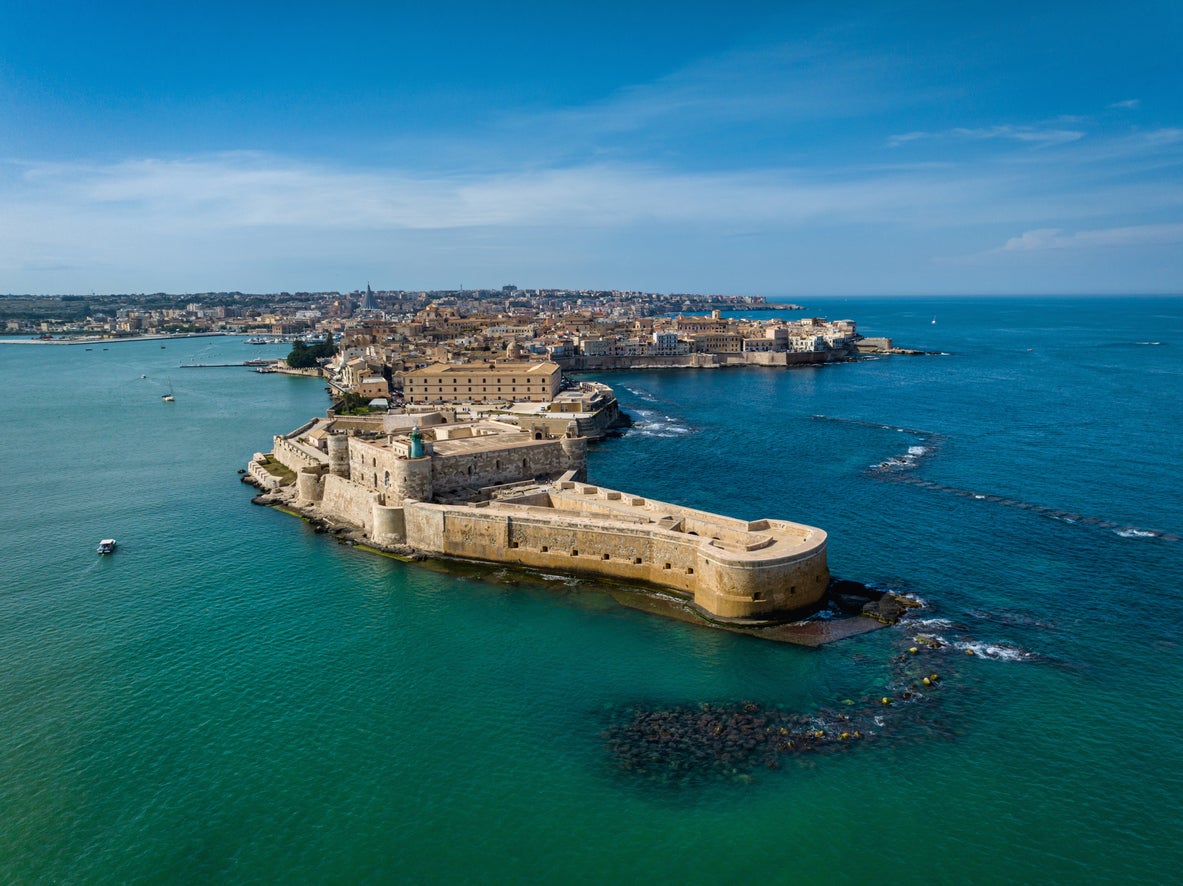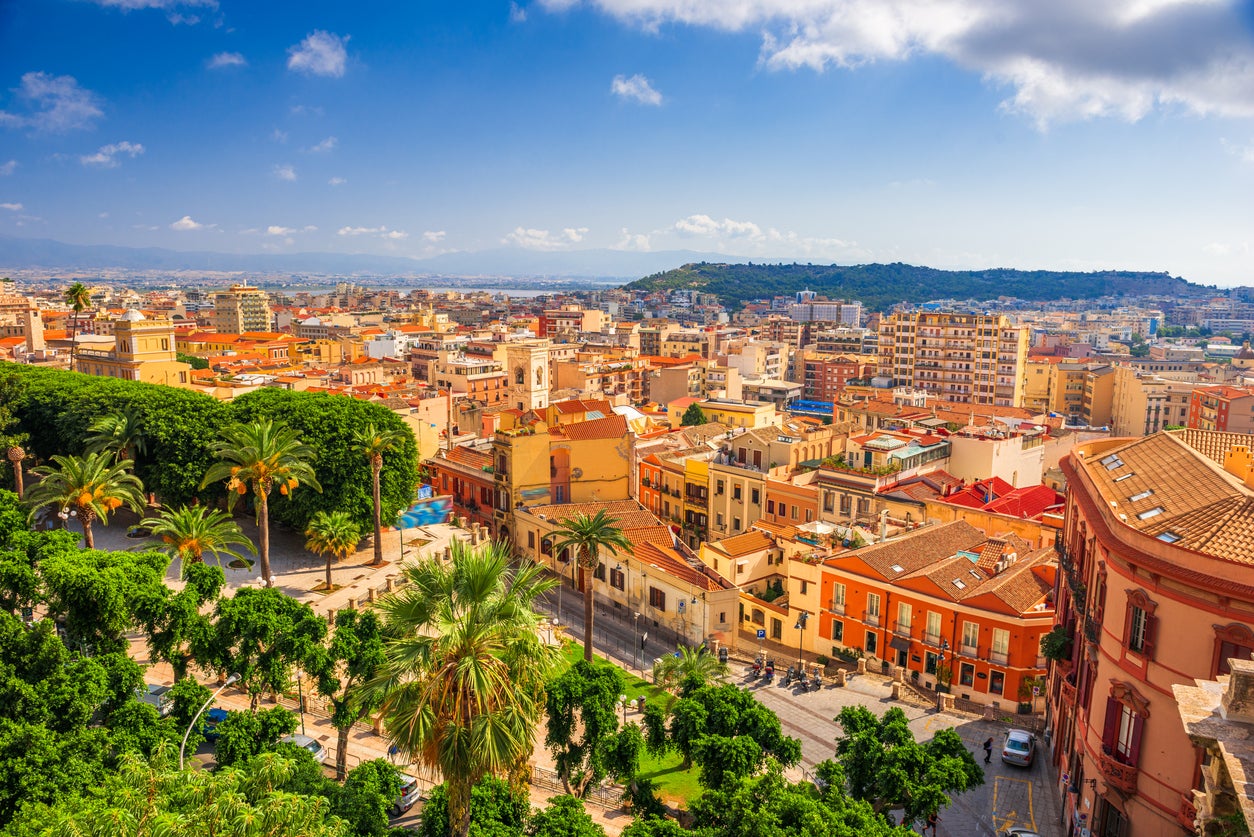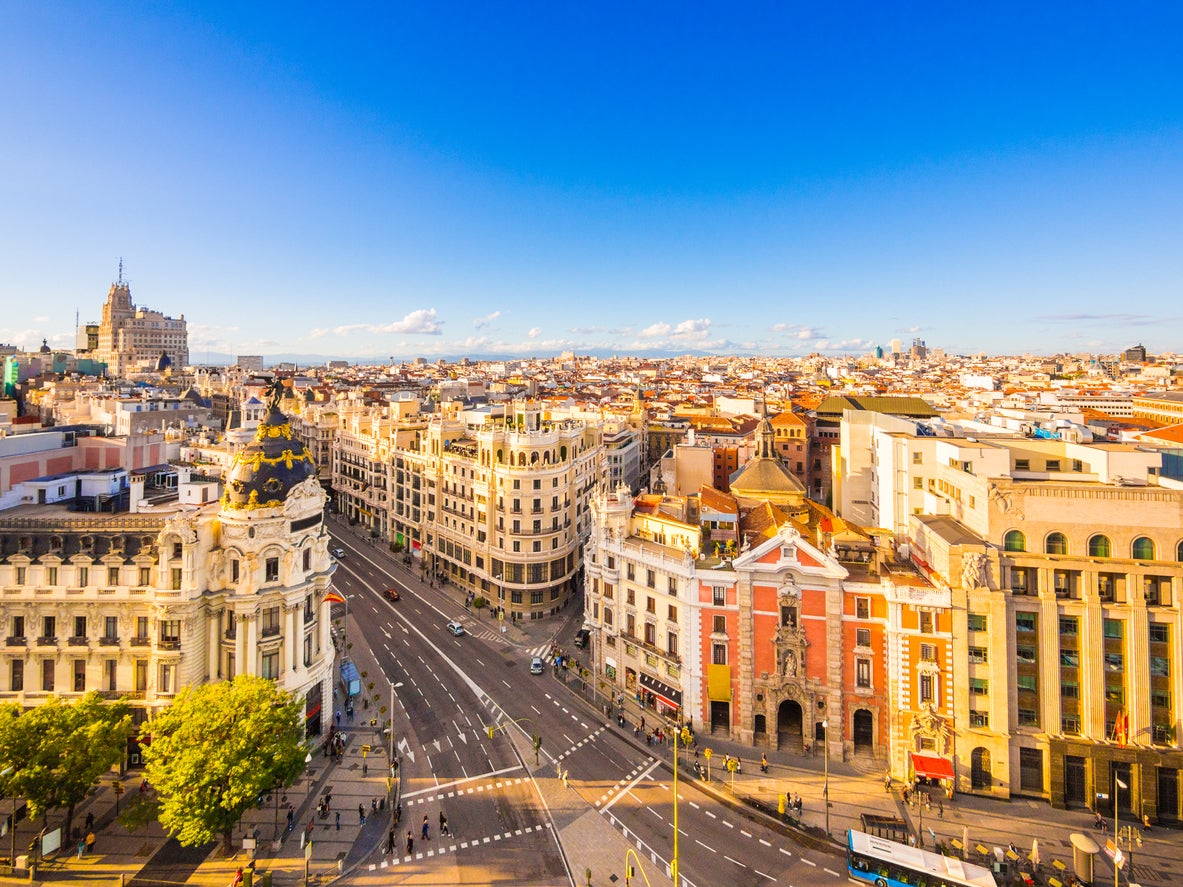The Independent's journalism is supported by our readers. When you purchase through links on our site, we may earn commission.
Which holiday destinations will be hottest this week and how can you stay safe as temperatures soar?
The heatwave continues to affect southern parts of the continent

The Cerberus heatwave has been causing the mercury to rise across southern Europe since last week, bringing temperatures of 40C and upwards in some parts of the continent.
With preliminary figures showing Earth’s average temperature set a new record high on 13 July for the third time in a week, this new spell of hot weather will continue to impact holidaymakers – particularly those heading for the Mediterranean countries of Spain, Italy and Greece – as well as locals.
The heatwave has been caused by a combination of unusually high surface temperatures at sea and an area of high pressure over the Mediterranean, with the addition of clouds of Saharan dust in some areas.
Several cities and towns in Europe have been put on alert as temperatures show no signs of subsiding, with the Charon heatwave bringing temperatures in certain destinations that are expected to exceed last week’s highs.
If you’re currently on holiday in Europe or getting ready to depart, you may be wondering what you’ll encounter across the Channel. Here are the literal holiday hotspots that are predicted to hit the highest temperatures this week, plus tips on how best to avoid the punishing heat while you’re travelling.
Italy
Sardinia

This popular holiday destination off the western coast of Italy could see temperatures of up to 48C this week (with a particular warning in place in Cagliari). This could see it approach – or potentially even top – the highest temperature ever recorded in Europe (48.8C). Peak temperatures are expected on Tuesday 18 July across all areas, with highs around 4pm.
Sicily
The largest island in the Mediterranean is where Europe’s highest ever temperature was recorded in August 2021, taken at a measuring point in Syracuse. Warnings have been issued for temperatures that could also exceed 48C; there are extreme warnings in place for Catania, Palermo and Messina.
Rome
The Italian capital’s inland location means it frequently gets sweltering in summer, with temperatures up to 43C possible this week; this would be above the city’s previous high of 40.5C, recorded in 2007.

Milan
While temperatures are expected to stay slightly lower in the northern areas, Milan could see highs of 36C. A man died in Lodi, near Milan, last week in an incident that is being attributed to the heat.
Bologna
Another inland destination that can get uncomfortably warm during summer, Bologna could hit temperatures of 40C this week. Along with Rome and Milan, it is one of 15 Italian cities that have seen weather warnings for extreme heat issued: Florence, Frosinone, Campobasso, Messina, Perugia, Pescara, Rieti, Viterbo, Bari and Civitavecchia.
Spain
Seville
The Andalusian capital is the warmest city in continental Europe in normal months, and could see temperatures exceed 40C this week. The Andalusia region has an extreme heat warning this week.
Madrid
Spain’s capital city suffers from sweltering temperatures in summer due to its landlocked, relatively high-altitude location. Temperatures there may also reach 40C this week.

Zaragoza and Murcia
Spain’s most extreme warnings are in Zaragoza and Murcia, where temperatures could reach 44C and 42C respectively. Sky News reports that, from Wednesday, Spain’s national weather agency expects “temperatures to fall overall with the arrival of cool winds from the north and east”, with the exception of Andalusia.
Catalonia
Spain’s national weather agency warns of an extreme heat risk in the regions around Girona and Lleida on Tuesday, with temperatures up to 43C. Barcelona may see temperatures around 38C.
Balearic Islands
There are extreme hear warnings of up to 43C for parts of Mallorca, including the centre, north and northeast, on Tuesday.
Canary Islands
While the only warnings for the Canaries are for temperatures in the 30s, firefighters were fighting forest fires on La Palma over the weekend. More than 4,000 people were evacuated from the area surrounding El Pinar and Tijarafem in the northwest of the island.
Greece
Athens
Authorities in the Greek capital shut the Acropolis, the country’s most-visited tourist attraction, for several hours on each day over the weekend. Temperatures reached 40C in several places, and could do so again this week, with Tuesday (18 July) expected to be the hottest day.
Thessaloniki
The northern Greek city could see temperatures higher than 38C. Other areas with high forecasts include Patras and Nafplio, where temperatures could reach 39C.
How can holidaymakers stay safe in extreme heat?
The NHS website has several tips for combating the heat. Dehydration, overheating, heat exhaustion and heat stroke are the biggest concerns for travellers as the mercury rises. Those most at-risk include the elderly, people who have long-term illnesses, people on multiple medications or those who find it difficult to keep cool, including young children.
The most important advice is to stay out of the sun, especially at the hottest times of the day (this is often mid to late afternoon in Europe, but can be anywhere between 2pm and 5pm) and when the sun is at its highest in the sky (midday). The NHS recommends staying in the shade between 11am and 3pm.
It is also important to keep yourself hydrated, avoiding caffeine and alcohol and drinking plenty of water (experts recommend drinking three litres per day in extreme heat). Cool showers can also help. It can also help to keep your living space cool: close windows during the day, open them at night and use electric fans or air conditioning, if necessary.
It’s also good to know the common symptoms of heat exhaustion and heat stroke. These include tiredness, dizziness, feeling sick, headaches, excessive sweating, fast breathing, a high temperature and general weakness.
Join our commenting forum
Join thought-provoking conversations, follow other Independent readers and see their replies
Comments


Bookmark popover
Removed from bookmarks